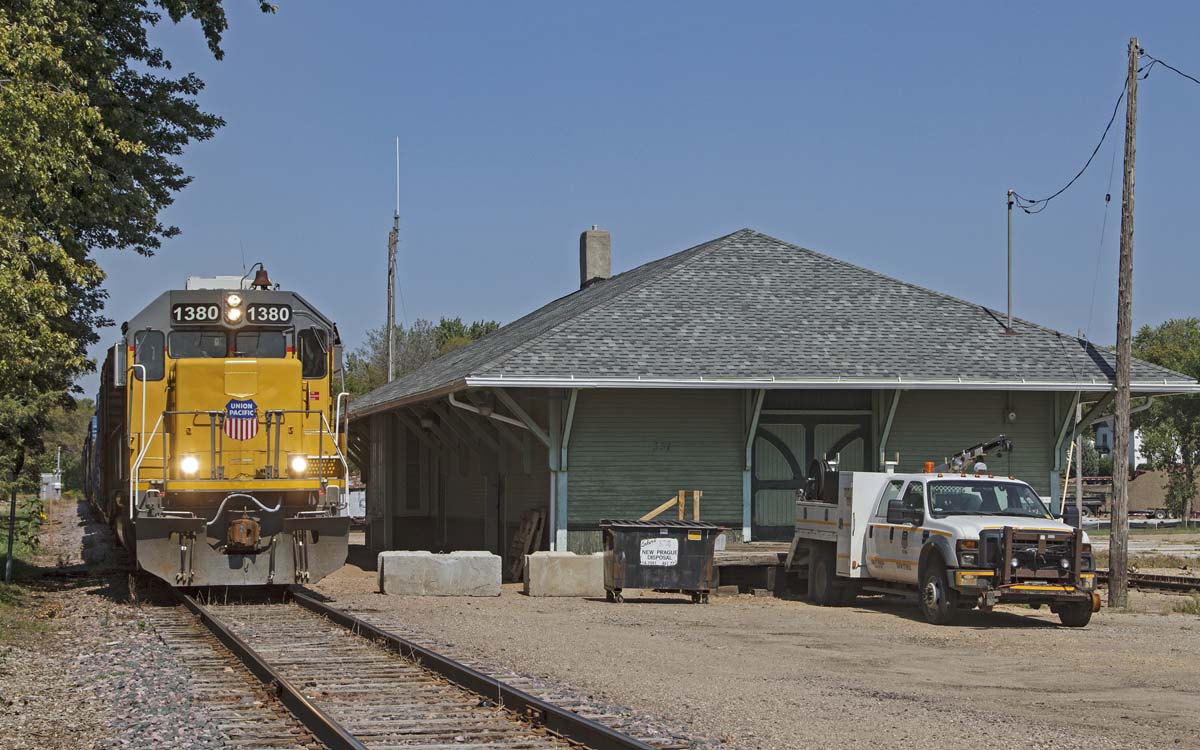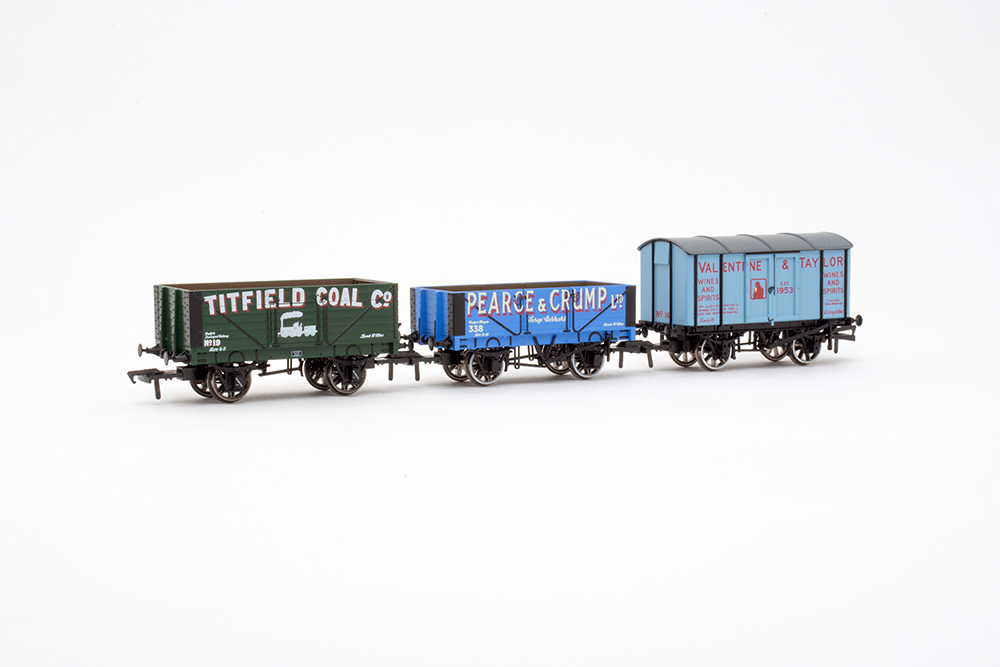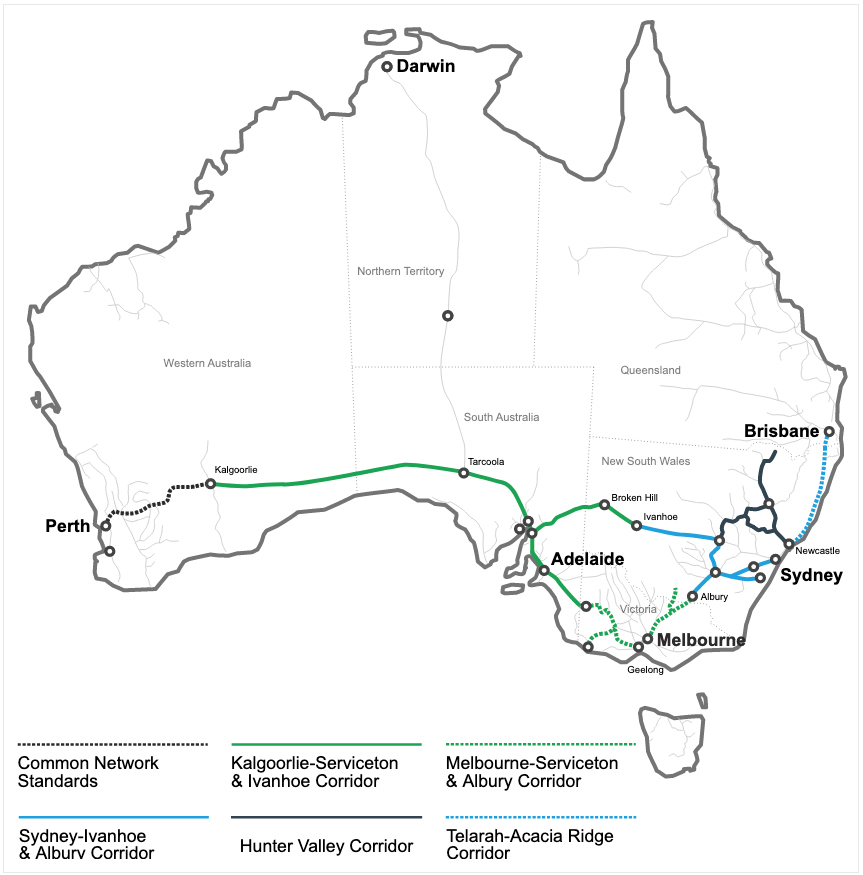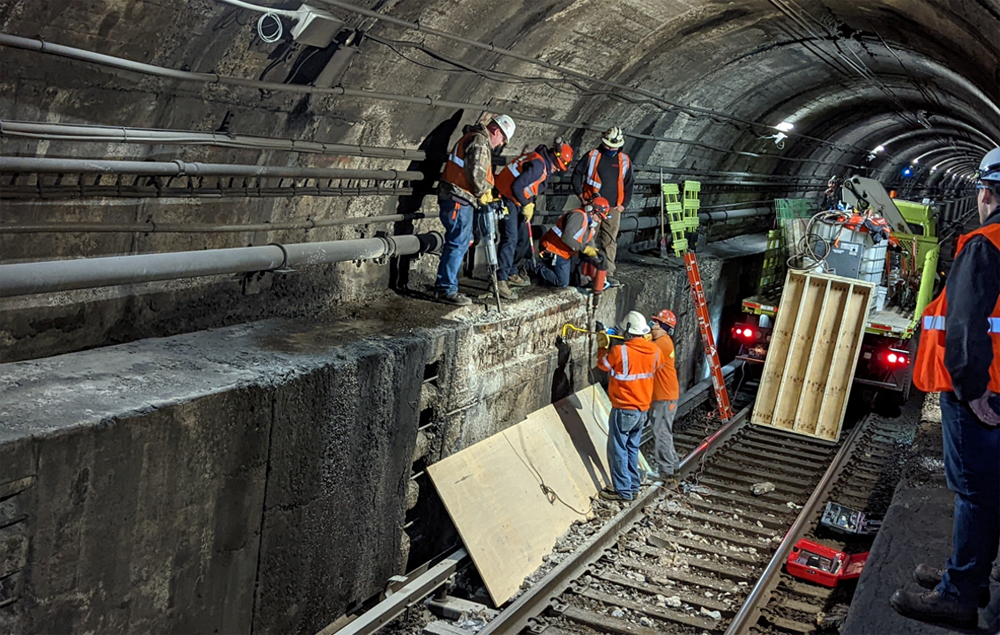The New Prague mill was first established in 1896. Miller Milling took over the mill in the 1980s. In 2012, Miller became a part of the Nisshin Seifun Group of Japan. The company says the age and location of the mill are primary factors in the decision to shut it down. The mill is served by a weekday UP local that connects with the former Omaha Road main line at Merriam, Minn.
When the mill shuts down there will be two customers remaining on the branch: Seneca Foods in Montgomery and Chart Industries in New Prague, which designs and manufactures cryogenic equipment for liquid gas.
The branch was once part of M&StL’s main line from Minneapolis to Marshalltown and Oskaloosa, Iowa, and east to Peoria, Ill. The other remaining portion of this route in Minnesota is a short stretch in Minneapolis and Canadian Pacific’s 19-mile Hartland Spur from Waseca to Hartland, which has not been used for several years. Other remaining Minneapolis & St. Louis trackage in Minnesota is operated by Minnesota Prairie Line and BNSF between Norwood and Madison 129 miles.















Not even the New Prague Hotel (home of the four hour German and Czech lunch) is left in New Prague any more.
Heineman did try to consolidate MStL with TPW. No idea what he was going to do with TP&W west of Peoria.
How about an upper midwestern road that connects with most major eastern and western railroads bypassing Chicago with a loop from Minneapolis to Detroit via Peoria: M&STL, TP&W, and Wabash? Adding IC allows Chicago-Minneapolis and provides a gulf coast outlet for all of the grain they would have collected.
Another possibility for M&STL: Santa Fe. They connected at Nemo, IL where Santa Fe provided a Chicago connection. If they could have also negotiated rights on Wabash from Albia, IA to La Plata, Mo, they could have fed a lot of gulf coast bound grain to Santa Fe.
I’d definitely agree that MStL should have been consolidated with Wabash’s Northern Missouri line. As for CGW . . . how about merging it with KCS, Missouri & Northern Arkansas, Missouri Oklahoma & Gulf and KCMO (and maybe Midland Valley) to form “Twin Cities Southern.”
Clearly there is a large shift in flour milling taking place as these 100+ year old mills are bought and then shut down. Either someone is buying them to get market share in milling by forcing the business to other plants, or the size of the mills aren’t economic anymore.
If the mills were located where the economics were OK, the new owners would simply be replacing them with more efficient ones. Instead they seem to be moving the milling to plants that are probably much larger in scale and therefore may have better economics.
Bryan and Landon:
Your comments are interesting. About two years ago, I posted a question about the IC purchasing the MSTL. The answer was that Wayne Johnston of the IC had seen the depression and did not want to take a chance with the MSTL, even though IC power ran through (I believe) to Cedar Lake (Minneapolis).
The CNW purchased the MSTL and CGW to elminate duplicate trackage and surplus branch lines. One author (I don’t remember which one) said that the CGW was one railroad too many in the midwest.
Ed Burns
Retired Clerk and railfan from Northtown (Minneapolis).
AMAZONSMILE
a charity search engine.
greatergood.com
I have long thought that N&W might have been a good fit for M&STL. Wabash was the M&STL’s connection to St. Louis and they also connected with the Nickle Plate in Peoria. However, I think M&STL was already gone by the time N&W bought the Wabash and Nickle Plate.
Going much farther back, to the 19th century, M&STL was the primary connection to Minneapolis for the Burlington, Cedar Rapids and Northern. Then M&STL bought Iowa Central which extended them into Peoria. Rock Island bought BCR&N as a possible gateway to the Northwest. They extended it to Minneapolis and considered extending its South Dakota line to a NP connection at Bismarck. Instead the line to Minneapolis became part of Rock’s (now UP’s) spine line. In hindsight, Rock may have been better served by buying M&STL as it could have been part of a spine line with far less new construction.
The BCR&N & Iowa Central (later part of M&STL) were both intended to be part of through routes between St Louis and Minneapolis. Wabash provided a St. Louis connection for M&STL. CB&Q provided a St Louis connection for BCR&N and later RI, even running a through Zephyr-Rocket between St. Louis and Minneapolis. However, CB&Q had it own line to Minneapolis which limited the future of this former BCR&N line.
I think that Rock had bought M&STL instead of BCR&N, C&NW may have actually provided good home to BCR&N as St Louis to Minneapolis traffic could have moved up C&NW’s St Louis line, west on the mail line to Cedar Rapids, and then up to Minneapolis on the BCR&N. UP could theoretically still do this if they bought, or acquired trackage rights over, the Iowa Northern. Iowa Northern is part of the old BCR&N and links UP’s spine line at Manly with the former CNW main line at Cedar Rapids.
Other potential M&STL merger partners I can think of may have included CB&Q, which had no lines in Northern Iowa or Southern Minnesota, or Chicago Great Western, which may have been able so save money by abandoning duplicate lines, which is what CNW did when they bought the M&STL.
Was just down the line from there in Waterville a couple years ago. Why didn’t the IC buy MStL? Would have been the perfect entrance/extension for it into the Twin Cities. CNW didn’t really need it.
Another comment: Regarding the timing of the closing, most companies have a plan for closing a plant, but don’t tell their employees until the last minute. Think about the few companies that have their door locks changed in the middle of the night–not even local management knew what was coming. I once looked at a job in the regional mechanical office in Minneapolis, but I decided not to take it as the woman who talked to me said that I would hear things that they did not want mechanical employees to hear at the moment. That woman was a piece of cake and 100% company in her attitude.
Are less people eating products made with flour?
W Cook:
You are assuming too much when you read the article. It states the the mill “had” a dedicated road switcher job to switch their mill. My opinion is that the mill probably had a track mobile, but the MSTL (CNW) assisted the mill in switching their mill during the grain rush. The NP had two time freights to switch the Rush City Amber MIlling. In addition, the Pillsbury Company paid the GN for the exclusive use of one switch engine at their “A” Mill in southeast Minneapolis. This was important due the many cars the GN had for the “A” Mill. I checked that mill on Saturday as part of a relief job after the 1970 merger.
One comment I had posted regarding the Amber Milling closing is true–when large companies purchase local elevators and milling facilities all they look at is the bottom line. They don’t have local management that owns said mill and they don’t have a concern for their employees or the town.
Retired Clerk from Northtown.
If the mill bought their own track mobile they likely could have switched their own car without paying for the railroad service much cheaper. Most industries do their own switching and can not afford a full time train crew.